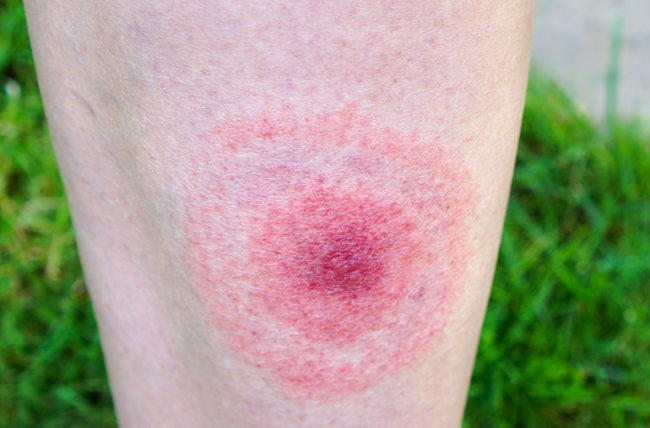What Is Lyme Disease and Prognosis

Lyme disease is an inflammatory disease contracted when an individual is bitten by a tick that carries the Borrelia burgdorferi bacteria. Often these ticks are so tiny – specifically, deer ticks, which are the most common carriers of the disease – which you may not even be aware you’ve been bitten.
Symptoms
Initial symptoms are similar to the flu and may include fever, chills, lethargy, headaches, and muscle pain. In addition, a rash or red spot that looks similar to a bullseye (either flat or slightly elevated) with a clear dot or area in the center may become visible where the tick bit you. This rash area could be 1-3 inches in diameter or larger.
Prognosis
When caught early, the prognosis for patients contracting Lyme disease is excellent. A round of antibiotics can cure the disease completely.
If, however, the disease is not found or diagnosed early enough, it can progress to stages 2 or 3 with symptoms that may include itching all over, strange behavior, a stiff neck, or inflammation of the joints.
Without the necessary early treatment, complications of the heart, joints, and nervous system can all occur in the long term due to inflammation.
Advanced Stages
In advanced stages of the disease, the brain can also be affected and result in neurological difficulties such as numbness or paralysis of facial muscles, vision problems, pain, decreased concentration, difficulty remembering things, trouble sleeping, and nerve damage. Lyme arthritis, caused by long-term joint inflammation and problems with heart rhythm, is also common.
Managing and Coping
The key to successfully managing and coping with Lyme disease is early diagnosis and treatment, so if you’re ever in doubt, go in to get tested as soon as you suspect an infected tick may have bitten you. If possible, save the tick in a small glass jar and bring it to the physician with you. Some facilities can test the tick for the infection.
Trending Health Topics
- ADHD
- Allergies
- Arthritis
- Bipolar Disorder
- Bunions
- Car Accidents
- Chron's Disease
- Common Cold
- COPD
- Depression
- Dry Skin
- Dry throat
- Eczema
- Fungal Infection
- GERD
- HIV/AIDS
- Hypertension
- Irritable Bowel Syndrome (IBS)
- Multiple Sclerosis
- Osteoarthritis
- Psoriasis
- Rheumatoid Arthritis
- Skin Disorders
- strep throat
- Type 2 Diabetes
- Uncategorized